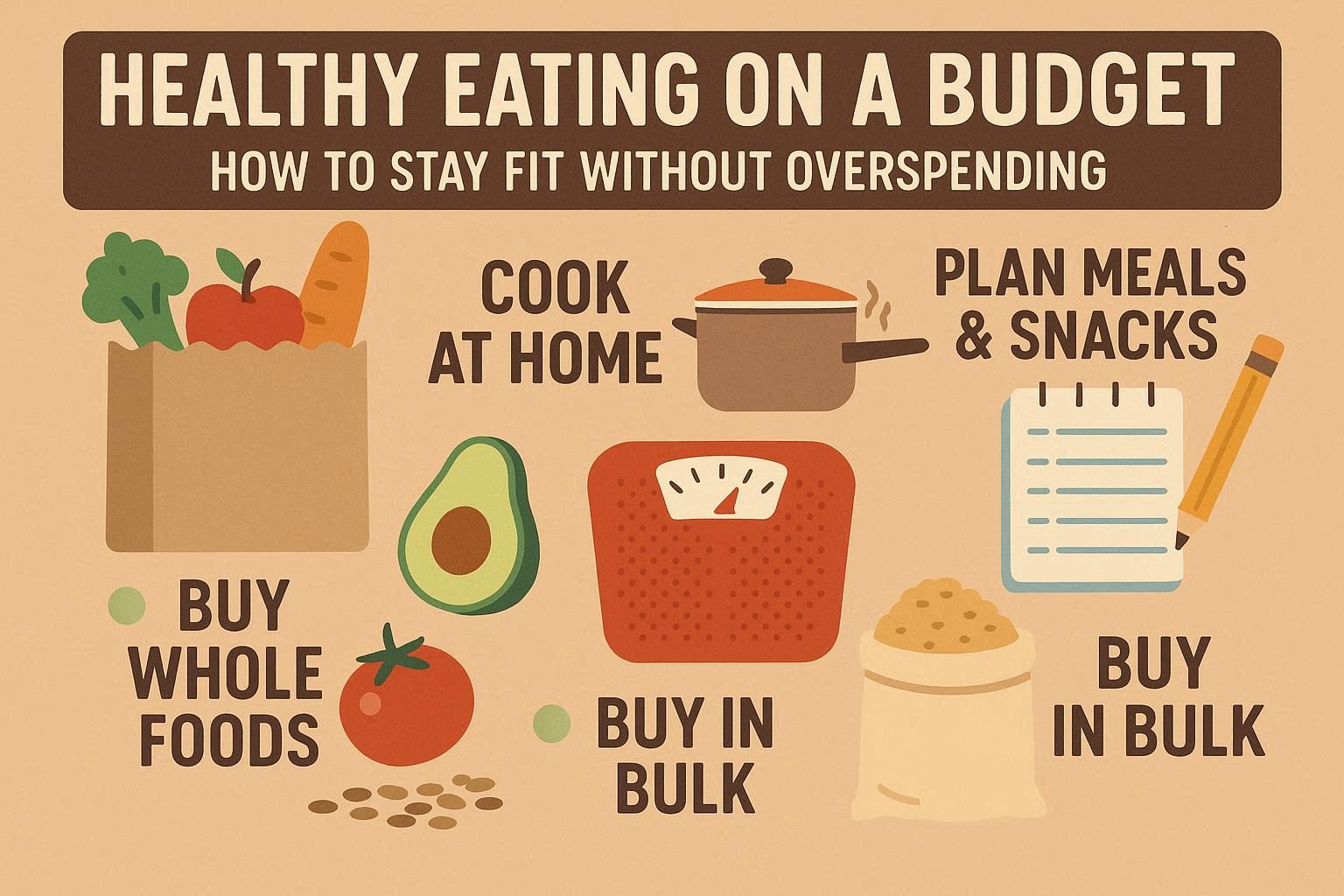Eating healthy is often associated with expensive grocery bills, organic products, and specialty diets. However, the truth is that good nutrition does not have to be costly. With the right planning, smart shopping, and practical strategies, it is possible to eat nutritious meals while staying within budget. In 2025, as food prices continue to rise globally, knowing how to balance health and affordability has never been more important.
This article explores practical ways to practice healthy eating on a budget, showing that with the right mindset, anyone can enjoy nutritious meals without financial stress.
1. The Myth: Healthy Food Is Always Expensive
Many people believe that healthy food is only available to those with high incomes. While it’s true that organic or specialty items can be costly, everyday foods like fruits, vegetables, legumes, and whole grains are affordable and highly nutritious. The real challenge is learning how to choose wisely and prepare meals efficiently.
2. Benefits of Eating Healthy on a Budget
Balancing affordability with nutrition offers many benefits:
- Improved Health – Reduces risk of chronic illnesses like diabetes, heart disease, and obesity.
- Financial Savings – Cooking at home costs less than frequent takeout or processed foods.
- Long-Term Value – Investing in health now prevents expensive medical bills in the future.
3. Smart Grocery Shopping Strategies
One of the easiest ways to eat healthy on a budget is by adjusting grocery shopping habits. Useful strategies include:
- Create a Meal Plan – Plan meals for the week to avoid impulse buying.
- Make a List – Stick to essentials and avoid unnecessary snacks or processed items.
- Buy in Bulk – Staples like rice, beans, oats, and pasta are cheaper in larger quantities.
- Shop Seasonal Produce – Fruits and vegetables are more affordable and fresher when in season.
- Compare Prices – Check store brands and discounts instead of sticking only to premium labels.
4. Affordable Nutrient-Dense Foods
Certain foods provide maximum nutrition for minimal cost. Examples include:
- Beans and Lentils – Rich in protein, fiber, and vitamins.
- Eggs – Affordable and versatile source of high-quality protein.
- Frozen Vegetables – Nutritious, long-lasting, and often cheaper than fresh.
- Oats – Inexpensive, filling, and great for heart health.
- Canned Fish – Such as tuna or sardines, packed with protein and omega-3s.
Including these items regularly ensures balanced meals without overspending.
5. Cooking at Home vs. Eating Out
Cooking at home is one of the most effective ways to save money and improve diet quality. A home-cooked meal often costs less than half of what a restaurant or takeout meal would, while also giving control over ingredients and portion sizes. Batch cooking and meal prepping can save time during the week while ensuring healthier choices.
6. Reducing Food Waste
Food waste is a hidden cost that affects both finances and the environment. To minimize waste:
- Use leftovers creatively in soups, salads, or wraps.
- Store food properly to extend shelf life.
- Understand expiration labels—“best by” often does not mean unsafe to eat.
- Freeze surplus items for later use.
By reducing waste, households can save hundreds of dollars annually while also contributing to sustainability.
7. Healthy Snacking on a Budget
Snacking doesn’t have to involve expensive packaged products. Affordable, healthy snacks include:
- Homemade popcorn with minimal seasoning.
- Fruit paired with peanut butter.
- Vegetable sticks with hummus.
- Boiled eggs or roasted chickpeas.
These options are filling, nutrient-rich, and cost-effective compared to processed alternatives.
8. The Role of Technology in Budget Nutrition
In 2025, digital tools make it easier to eat well on a budget. Mobile apps offer meal planning assistance, grocery list organization, and coupon tracking. Some apps even calculate the nutritional value of meals based on ingredients, helping families stay both healthy and economical.
9. Community and Shared Resources
Communities around the world are embracing shared resources to make healthy eating more accessible. Examples include:
- Community gardens where members grow fresh produce together.
- Local food co-ops that offer lower prices on bulk goods.
- Cooking classes that teach affordable, nutritious recipes.
Such initiatives not only save money but also promote healthier, more sustainable lifestyles.
10. Long-Term Perspective: Investing in Health
Eating healthy on a budget is not just about short-term savings—it is a long-term investment in well-being. Choosing affordable, nutrient-dense foods helps prevent chronic diseases, increases energy levels, and enhances quality of life. The money saved from avoiding fast food or unhealthy snacks can be redirected toward other essential needs.
Conclusion
Healthy eating and affordability can go hand in hand with the right approach. By planning meals, shopping smart, reducing waste, and focusing on simple, nutrient-rich foods, anyone can enjoy a balanced diet without financial stress. In 2025, as costs rise and health challenges grow, mastering the art of eating well on a budget is one of the most valuable skills for individuals and families alike.

